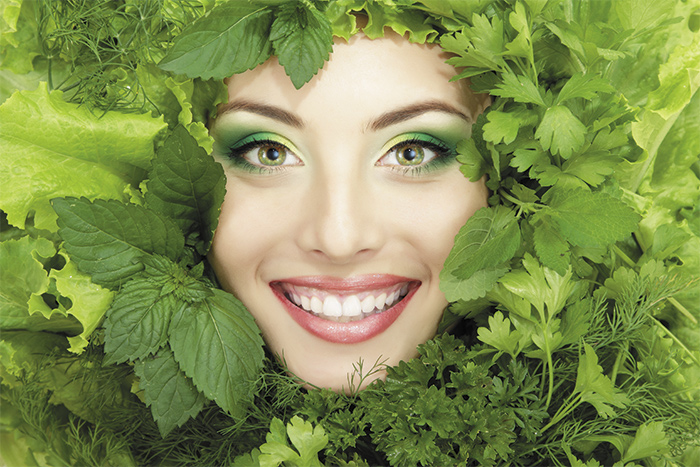 Ensuring that your eye health is well maintained calls for a holistic approach, which involves following appropriate dietary habits, coupled with regular eye exercises.
Ensuring that your eye health is well maintained calls for a holistic approach, which involves following appropriate dietary habits, coupled with regular eye exercises.
In today’s day and age, the choices we make, in terms of work and lifestyle, have a critical bearing on our eye health. It becomes imperative to take sufficient care of the eyes, which might seem tedious to some people… but, it really isn’t. It’s just a matter of making a few dietary changes and adopting a healthy lifestyle.
There are plenty of ways to nurture and nourish your eyes. Maintaining a proper diet is one crucial and straightforward method to make sure your eyes stay healthy. We’ve all read and heard about the benefits of green vegetables, especially of the leafy variety, to help us avoid vision problems. Over the past three decades or so, researchers have come up with results from studies that back these beliefs.
FOOD THAT MATTERS
A part of the Harvard-based Nurses’ Health Study and Health Professionals Follow-up Study has proven that eating plant-based foods that are rich in Vitamin A, aids people suffering from night blindness. Other fruits and vegetables help prevent two common aging-related eye diseases — cataract and macular degeneration.
The study also found out that metabolic by-products called free radicals are generated by sunlight, cigarette smoke, air pollution, infection, and metabolism. These are the common culprits that give rise to various ocular diseases. And this is where dark, green leafy vegetables step in to protect your eyes. They contain pigments known as lutein and zeaxanthin, which accumulate in the eye and destroy these free radicals before they can harm the eye’s sensitive tissues.
Darker-coloured fruits and vegetables are also good sources of beta-carotene. These nutrients, along with vitamins, can help in ensuring better eye health. Substances like Omega-3 fatty acids – which are found in fish like salmon, tuna, sardine and mackerel – help in vision development and also protect the eyes from macular degeneration.
Oxidation causes cataracts, thus hampering vision. A diet rich in vitamins helps prevent many eye diseases, since it contains anti-oxidants and other compounds like carotenoids which are produced in the red, yellow and orange colours found in many fruits and vegetables. Our body counters this effect by using the antioxidants present in carotenoids as well as vitamins C, E and A.
EXERCISING THE EYES
 Now that we know about various foods that can help ward off some common eye ailments, let’s look at some lifestyle shifts that can help in overall healthy vision. A lot of eye problems arise when eye muscles lose their elasticity and become rigid. This affects the eye’s ability to focus at different distances, which leads to poor vision.
Now that we know about various foods that can help ward off some common eye ailments, let’s look at some lifestyle shifts that can help in overall healthy vision. A lot of eye problems arise when eye muscles lose their elasticity and become rigid. This affects the eye’s ability to focus at different distances, which leads to poor vision.
Any general feeling of tension tends to make the eye muscles rigid, as the eye is connected to the brain through the optic nerve. Tension in the eyes increases the nerve impulses present in the eye muscles, then travels along the optic nerve and bombards the brain, causing a higher level of anxiety.
Just like the rest of our muscles need to be exercised, our eyes need the same care. Any form of exercise, including walking, reduces the pressure on the ocular muscles and is beneficial for the eyes.
Vision is one of our most treasured senses, yet many of us take it for granted until it begins to fail. Our eyes need proper care and attention at all times. It is only with proper diet and by following a healthy lifestyle that we can ensure to continue to have that coveted twinkle in our eyes.
Some Easy-to-do Eye Exercises
1) Shut your eyes, hold them tight for three seconds and then let go quickly.
2) Blink continuously a few times. Then, move your eyes upwards as far as possible, and then downwards as far as possible. Repeat this action around four times.
3) Shut your eyes and roll your eyeballs around for a minute.
4) Inhale, and slowly direct your gaze to the ceiling. Exhale, and move your gaze down in a straight line, towards the floor. Repeat six to eight times.
5) Hold your arm straight out, with your thumb extended in a ‘thumbs-up’ position. Your thumb should be directly in the line of your vision. Now, move your thumb from left to right slowly, without taking your eye off your thumb. Do this around 10 times, at least once a day.
6) Rub your palms together and gently cup them over your closed eyes for about a minute.
Food That Aid Healthy Vision
- Salmon, tuna, sardine and mackerel contain Omega-3 fatty acids and protect the eyes from macular degeneration.
- Spinach, carrots, sweet potatoes and corn, meat products like liver and cod liver oil are rich in Vitamin A, helpful against retinitis pigmentosa.
Are you wondering what food you should add to your meals to safeguard your eyes? Let us make it easy for you by listing food that contain important nutrients.
- Vitamin A: Vitamin A is required for converting light into nerve signals in the retina. It is usually found in green and yellow vegetables like spinach, carrots, sweet potatoes, corn, and also in egg yolks, liver, cod liver oil and butter milk.
- Vitamin C: Vitamin C is an antioxidant that helps in protecting some parts of the eye against damage caused by ultraviolet rays. Vitamin C reduces the pressure in the eyes of glaucoma patients, delays macular degeneration and minimises cataract risk. It is found in citrus fruits like berries, strawberries, guava, mango, raspberries, papaya and pineapple and also in green leafy vegetables like broccoli, potatoes, peppers, red bell peppers.
- Vitamin E: Vitamin E is yet another powerful antioxidant that helps protect membranes of cells throughout the body against damage caused by free radicals. It is abundantly found in vegetable oils. Other good sources for vitamin E include whole grain cereals, almonds, hazelnuts, papaya and peanuts.







